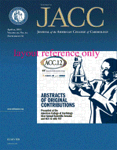Genetics:研究者揭示连接糖尿病和阿尔兹海默症的共同基因
2012-06-18 T.Shen 生物谷
近日,来自纽约城市大学的研究者研究发现,存在于阿尔茨海默症患者机体的基因可以影响其胰岛素途径。这个途径的破坏将会是引发糖尿病的一个标志,相关研究成果刊登在了近日的国际著名杂志Genetics上,这将为开发一些靶向治疗方法提供了线索和希望。 II型糖尿病患者存在高的痴呆风险,胰岛素途径介导了很多代谢过程,包括帮助维持神经系统的健康等等。目前尽管阿尔兹海默症的原因尚不清楚,但是目前患者死后诊断的标准

近日,来自纽约城市大学的研究者研究发现,存在于阿尔茨海默症患者机体的基因可以影响其胰岛素途径。这个途径的破坏将会是引发糖尿病的一个标志,相关研究成果刊登在了近日的国际著名杂志Genetics上,这将为开发一些靶向治疗方法提供了线索和希望。
II型糖尿病患者存在高的痴呆风险,胰岛素途径介导了很多代谢过程,包括帮助维持神经系统的健康等等。目前尽管阿尔兹海默症的原因尚不清楚,但是目前患者死后诊断的标准是患者大脑中的淀粉样蛋白的粘性斑是否存在。人类淀粉样前蛋白(APP)的突变或者处理APP基因的突变揭示出阿尔兹海默症会在家族中流行。这项研究中,研究者Li和其同事研究了蛋白质APL-1,该蛋白由基因秀丽隐杆线虫的基因编码。
研究者表示,他们的发现秀丽隐杆线虫等价APP基因的突变可以减缓其发育的速度,这就解释了某些代谢途径是被破坏掉的。研究者将开始研究等价APP基因是如何同时调节不同的代谢途径以及如何影响胰岛素途径的。研究者表示APL-1蛋白异常重要,当敲除了秀丽隐杆线虫的等价APP基因,动物就会死亡,这就告诉我们APP基因家族蛋白对于线虫是必不可少的,正如APP基因在哺乳动物中也是很重要的。
这项研究中,研究者揭示了糖尿病患者和阿尔兹海默症患者的联系,然而这种蛋白质碎片和胰岛素途径有关系,每一个碎片蛋白都会吸附并且给神经元传导信号。后期研究者还会深入研究其具体的机制。
编译自:Gene may link diabetes and Alzheimer's, researchers find
编译者:天使托

doi:10.1534/genetics.112.138768
PMC:
PMID:
APL-1, the Alzheimer’s Amyloid Precursor Protein in Caenorhabditis elegans, Modulates Multiple Metabolic Pathways Throughout Development
Collin Y. Ewald1, Daniel A. Raps2 and Chris Li1,*
Mutations in the amyloid precursor protein (APP) gene or in genes that process APP are correlated with familial Alzheimer’s disease. The biological function of APP remains unclear. APP is a transmembrane protein that can be sequentially cleaved by different secretases to yield multiple fragments, which can potentially act as signaling molecules. Caenorhabditis elegans encodes one APP-related protein, APL-1, which is essential for viability. Here, we show that APL-1 signaling is dependent on the activity of the FOXO transcription factor DAF-16 and the nuclear hormone receptor DAF-12 and influences metabolic pathways such as developmental progression, body size, and egg-laying rate. Furthermore, apl-1(yn5) mutants, which produce high levels of the extracellular APL-1 fragment, show an incompletely penetrant temperature-sensitive embryonic lethality. In a genetic screen to isolate mutants in which the apl-1(yn5) lethality rate is modified, we identified a suppressor mutation in MOA-1/R155.2, a receptor-protein tyrosinephosphatase, and an enhancer mutation in MOA-2/B0495.6, a protein involved in receptormediated endocytosis. Knockdown of apl-1 in an apl-1(yn5) background caused lethality and molting defects at all larval stages, suggesting that apl-1 is required for each transitional molt. We suggest that signaling of the released APL-1 fragment modulates multiple metabolic states and that APL-1 is required throughout development.
本网站所有内容来源注明为“梅斯医学”或“MedSci原创”的文字、图片和音视频资料,版权均属于梅斯医学所有。非经授权,任何媒体、网站或个人不得转载,授权转载时须注明来源为“梅斯医学”。其它来源的文章系转载文章,或“梅斯号”自媒体发布的文章,仅系出于传递更多信息之目的,本站仅负责审核内容合规,其内容不代表本站立场,本站不负责内容的准确性和版权。如果存在侵权、或不希望被转载的媒体或个人可与我们联系,我们将立即进行删除处理。
在此留言














#Genet#
46
#Gene#
51
#Genetics#
58
#NET#
54
#研究者#
68
#阿尔兹海默#
51